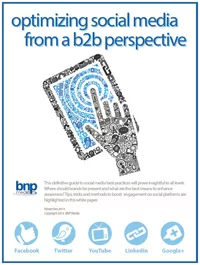Is a Failed Product a Failure – Or Opportunity?
Many "failed" projects are actually marketable in other areas. An industry consultant shares his top three categories of failed projects and how they became successful.



As a consultant in the silicones business over the last 20 years, I’ve found myself in some pretty sticky situations. I have been asked to make many new products, as well as help fix others considered “broken” in a customer’s process; many of these are outlined in the case history section of my book, Silicone Elastomer Handbook.
While revisiting many of these projects, I found that many custom products that were considered wasted time were not always failures; instead, they were miscommunications, marketing failures, or bad partnerships. This article identifies three categories of activities that resulted in “failed” projects that ended up marketable in other areas.
1. Unmet Needs
Unmet needs are products that I couldn’t develop because I did not have the right technology at the time. In hindsight, it’s now obvious that the answers were often right in front of me.
Early unmet needs ranged from molding firms requesting higher tear, lower viscosity and better shelf stability to aerospace companies wanting low temperature yet high performance capabilities. Some 20 years ago, I understood general routes to accomplish each of these facets. However, they did not become technical successes. This could have been because many of them targeted a market that I was unfamiliar with.
Over time, I have come to realize that the solution could have been addressed with higher levels of applied materials technology. Many of the solutions were made possible through higher filler treatment and polymer engineering. Most often, the polymer contributions were accomplished either from chain extension, functionalization or end capping. In addition, crosslinkers needed to be tamed. Controlling the reactivity of silanes enabled desired properties and minimized undesirable ones. Various fumed silicas enabled suspension, compatabilization and unique rheologies. In some products, robust product engineering has resulted in exceptionally long shelf life, ranging from five to 10 years.
One of the biggest obstacles regarding unmet needs involves working with customers. For a technical person, chemistry is the easy part; communication, however, can be tricky. Semantics can often create alternative perceptions based on differing perspectives of performance. Once a problem is clearly defined—and all parties are speaking the same language and using the same terminology—routes to solutions are much simpler. Often, this requires several attempts and interviews with everyone involved with the project. The combination of perspectives often provides a better overall understanding.
Once communication is established, the next hurdle is attaining a target. Getting a clear and firm target can be a challenging task with some customers. Once a product concept is developed, different departments have different wants, some of which are unattainable. For example, the marketing department will always want to improve the capabilities of the product, while manufacturing personnel will want it to be easier to make. Purchasing will want the product to be less expensive, and the quality control staff will want the product to be easier to test. Management often wants to keep the targets loose so that they can add on additional requirements at a later date.
The best solution to this obstacle is to establish a single point of contact. As a consultant, I realized I should have one project manager, with whom I can set clear and firm targets. This eliminates other departments offering their opinions, as they all have a different end game in mind.
2. Marketing Failures
In my experience, marketing failures were many; each gave me the opportunity to open new doors and develop new products. I define marketing failures as new products that were a technical success on my end, but a marketing failure due to the client. Examples include misdirection to the market in terms of application, focus, business strategy or terminology. In some cases, clients thought they had guaranteed business, but then funding was eliminated. In others, the interested party didn’t follow through or lost interest, and the product was never commercialized or offered to the market.
At one time, the Office of Naval Research (ONR) requested a vehicle undercoating and initial funding was provided by the U.S. government. The initial targets requested by the Marines were met; the product was fire-, sand-, sound- and abrasion-proof. A perfect product was developed to allow U.S. government vehicles to hold up in rough terrain environments without costly repairs. The ONR’s testing and quality control labs were pleased. However, we then encountered a marketing failure. The firm pivotal in the introduction of the product ran out of money after the testing period and did not obtain the required government contracts to purchase. I recently took this failure as a new opportunity, and now offer the product in different variations to several different markets as a sound-proof paint, a fire-proof automotive undercarriage coating, and a thermally conductive coating.
Another example of a marketing failure was an anti-graffiti coating. A marketing associate said that the railroad industry needed a new coating that would not allow spray paint or graffiti to stick to the railroad cars or nearby concrete structures. During field testing, the marketing associate only approached one client, contrary to his initial claims that he had several interested parties. This client thought the coating was not durable enough. After only one customer interface, the marketing associate moved on to another project, with no regard to the time spent to develop, prepare, test and send out samples. Oddly enough, a few months later, a large local paint company introduced an almost identical product. It may have been a coincidence—but nonetheless a disappointing marketing failure.
3. Bad Partnerships
Some of the most interesting experiences I have had were with inventors, who can be very colorful individuals. Most seemed to always have a product concept and patents, but no functional product. Thus, each wanted my help to finalize their technology, which involved silicones. We would form a partnership in which I would help develop the final product for a percentage of ownership of the product, should it come to market.
One of the most humorous former partners was a fellow from overseas who created his own vocabulary for the bonding technology created by his adhesive. I tried to persuade him to use standard industry terms if we were going to present our product to the market; he disagreed. It was hard for me to keep a straight face in meetings, where he used his terms instead of industry standards. During a final presentation to the investors, where I was discussing the chemistry of the product, my partner intervened and tried to correct my terminology. Because of this, my credibility, as well as the credibility of the products created, was instantly deflated.
Another failed partnership occurred with an industry insider who wanted me to develop a marine anti-fouling coating. He knew the industry’s needs and thought that we could easily compete in this market due to the high profitability. If I could develop the product, the partner would find all of the business and later handle marketing. He was motivated by the possible profits, which also sparked my interest. It ended up being a very time-consuming and costly project that took three years of developmental work and field testing. However, the product worked great.
The final demonstration was on a large yacht being ferried over to the Mediterranean for the summer. While the partner was going to be on the boat, he didn’t mention that the owner of the competing company in that industry would also be there. The propellers and running gear were all coated with the silicone coating, as we had done several times in the past. However, when the yacht returned in the fall, the partner deemed the test a failure. Upon my inspection, instead of seeing a wear pattern, I could see that the coating was half scraped off with a sharp object. This failure can be chalked up to poor partner selection on my part. I recently introduced the product into the marine industry at a lower cost with some success.
Conclusion
Bad partnerships, unmet needs and marketing failures were all poor experiences at one point. These experiences have now created new product lines and offerings from my company. Each revisited project generates a new product—often more than one. Much like a roller coaster, my career has had some sharp turns and lots of ups, but fortunately only a few downs. Thankfully, many of these downs have now turned into uphill rides. My career has gone by quickly, and has been a thrill along the way.
Looking for a reprint of this article?
From high-res PDFs to custom plaques, order your copy today!








